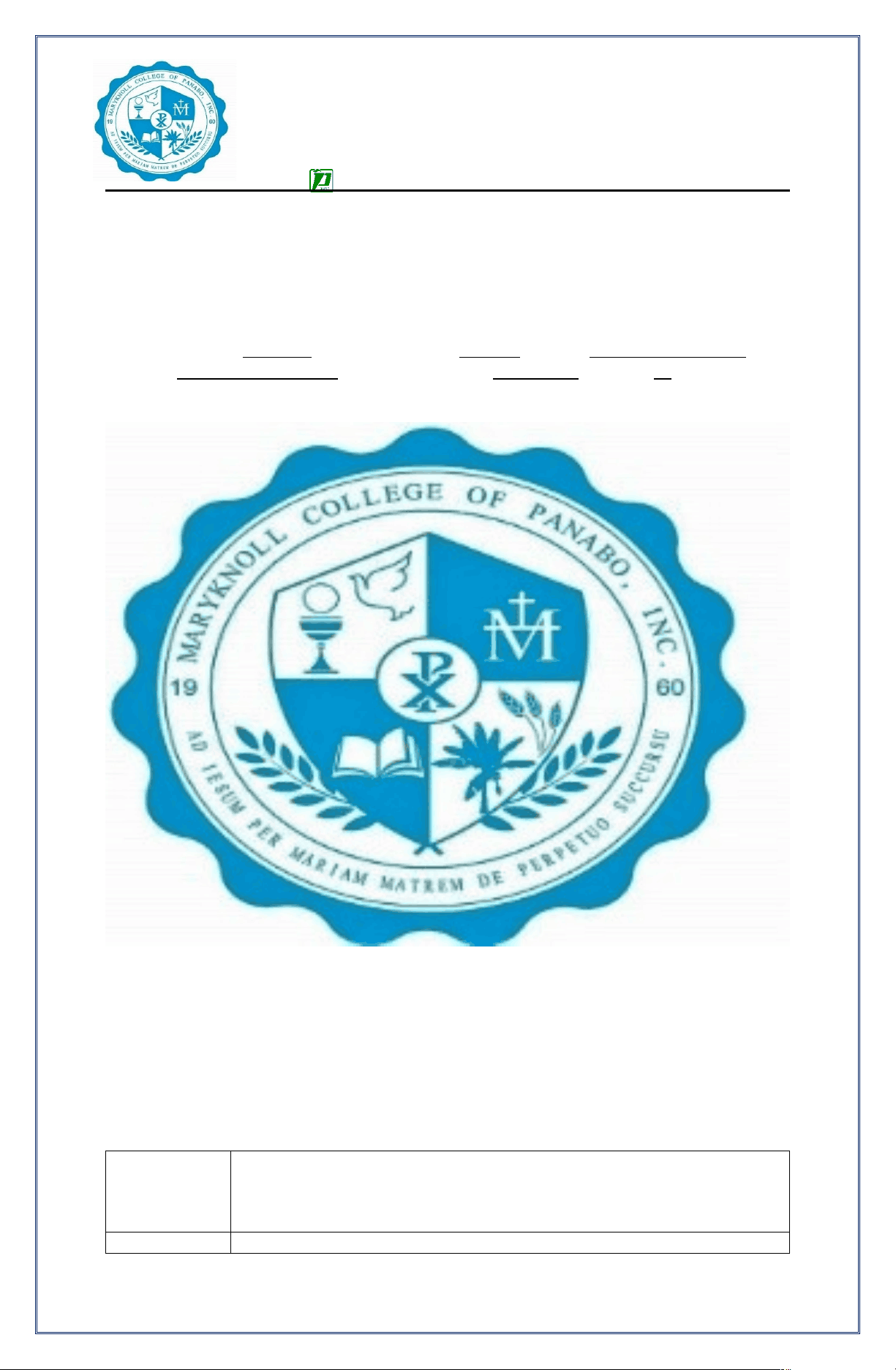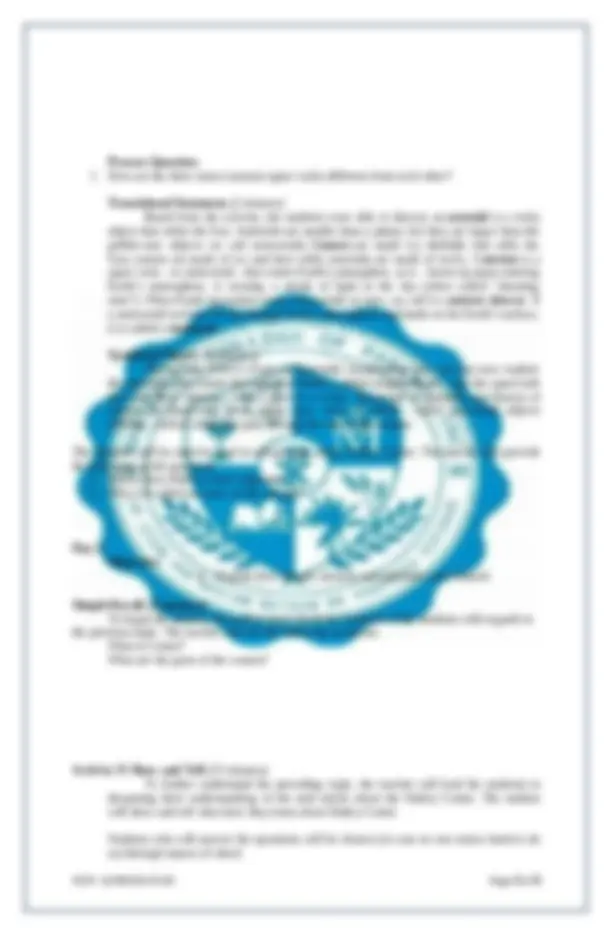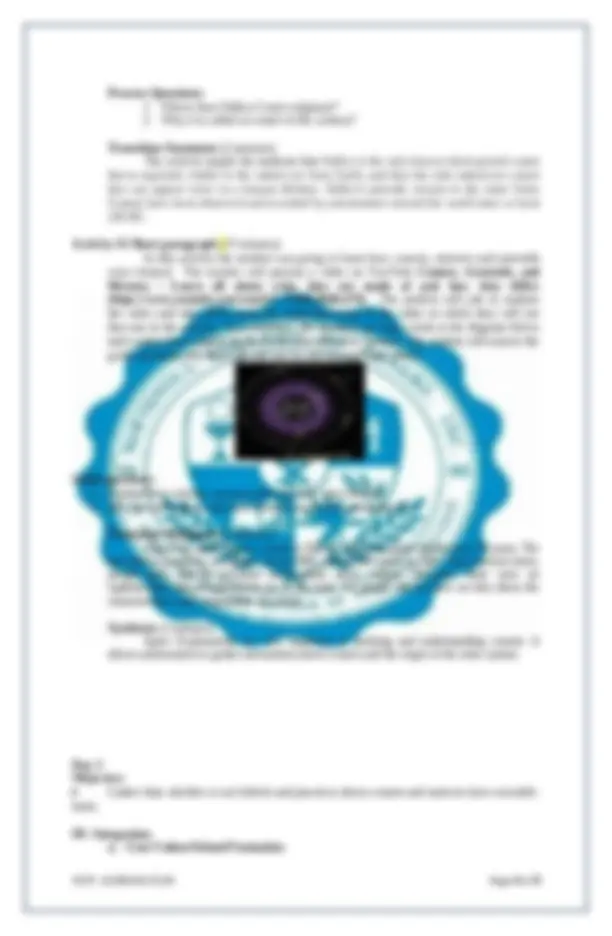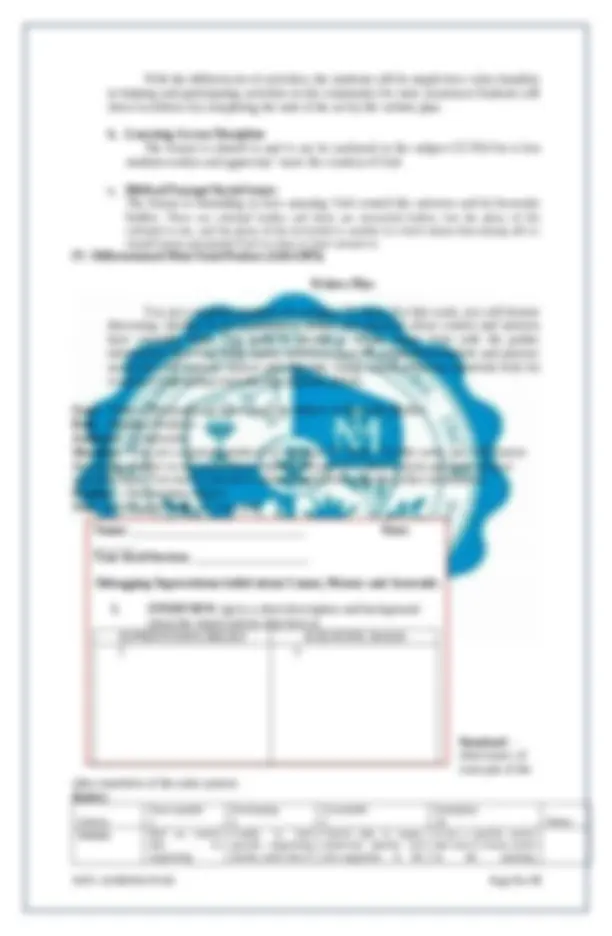





Study with the several resources on Docsity

Earn points by helping other students or get them with a premium plan


Prepare for your exams
Study with the several resources on Docsity

Earn points to download
Earn points by helping other students or get them with a premium plan
Community
Ask the community for help and clear up your study doubts
Discover the best universities in your country according to Docsity users
Free resources
Download our free guides on studying techniques, anxiety management strategies, and thesis advice from Docsity tutors
Detailed lesson plan in other members of the solar system
Typology: Lecture notes

Limited-time offer
Uploaded on 02/17/2022
5
(3)2 documents
1 / 6

This page cannot be seen from the preview
Don't miss anything!





On special offer
Prk. Atis, National Highway,Brgy Sto. Niño, Panabo City 8105 PAASCU Accredited Level I Junior High School Unit Academic Year 2021- STUDENT LEARNING PLAN Learning Plan in: Science 8 Grade Level: Grade 8 Date: December 6-10, 2021 Teacher: Tweithums J. Nicolas, LPT Quarter: 2 nd^ Quarter Week: 17 Topic/s:
2 words
O r o o d d u l c t
O i o r e t a b r l d p b 2 words
H b y o e a r l p 1 word
T i a l 1 word
C m a o 1 word
Motivation: KWL 5 minutes The teacher will instruct the student to fill in the KWL chart about comets, meteors and asteroids. Activating Prior Knowledge: 5 minutes The teacher will provide and article related to the superstitious belief on the heavenly bodies. After reading the article the teacher will ask the following questions: What do you think the articles talks about? Has it change your beliefs about the heavenly bodies? Does any similarities in your beliefs? INTERACTION II- Lesson Development Procedure Activity 1 Let’s Discover (20 minutes) In this activity, the student was going to learn the difference between comets, meteor and asteroid and they will read the Sci-Core activity pages 161-168 to further understand the lesson. The teacher will utilize the breakout rooms to group the class into three (3). Each group will be assigned on a specific type of Heavenly bodies. Group one will have the Meteor, group two Comet and the group three for Asteroids. Students’ task is to discuss with their group the topic given. They will have three (3) minutes to do so. After which, the ambassador of each group will be transferred to the other breakout room to discuss as well their assigned topic. The same process will do every 3 minutes. During the presentation time, the teacher will ask each group about their collected ideas as well as their example. As they share to the class, other groups will evaluate whether or not the example they have given is correct. After finishing the presentation, the student will fill in the Venn diagram to compare and contrast comets, meteors and asteroid.
Process Questions:
With the different set of activities, the students will be taught how value humility in helping and participating activities in the community for raise awareness Students will show excellence by completing the task of the set by the written plan. b. Learning Across Discipline The lesson is related to and it can be anchored to the subject CLVEd for it lets students realize and appreciate `more the creation of God. c. Biblical Passage/Social Issues The lesson is reminding us how amazing God created the universe and its heavenly bodies. There are celestial bodies and there are terrestrial bodies; but the glory of the celestial is one, and the glory of the terrestrial is another in which means that among all we should honor and glorify God in what we have around us. IV- Differentiated Mini Task/Product (GRASPS) Written Plan You are a segment producer of a science TV show. For this week, you will feature discussing whether or not superstitious beliefs and practices about comets and meteors have scientific basis. You need to present a written report form with the gather information. Interview some family members about the superstitious beliefs and practice associated with comets, meteor and asteroids. Using science reference materials look for evidence’s that debug/contradict the different beliefs. Goal – Write a Documentary report about the beliefs of Heavenly Bodies Role – Segment Producer Audience – Community Situation – You are a segment producer of a science TV show. For this week, you will feature discussing whether or not superstitious beliefs and practices about comets and meteors have scientific basis. You need to present a written report form with the gather information. Product – Documentary Report Note: Use the given table for your task Standard – observance of concepts of the other members of the solar system Rubric: Criteria Unacceptable 1 Developing 3 Acceptable 5 Exemplary 10 Points Content Had no central idea or supporting Unable to find specific supporting details; more than 4 Central idea is vague; somewhat sketchy and non-supportive to the It has a specific central idea that is clearly stated in the opening; **Name: _____________________________ Date:
Year level/Section: ___________________ Debugging Superstitious belief about Comet, Meteor and Asteroids I. OVERVIEW: (** give a short description and background about the report and its objectives. ) SUPERTITIOUS BELIEF SCIENTIFIC BASIS